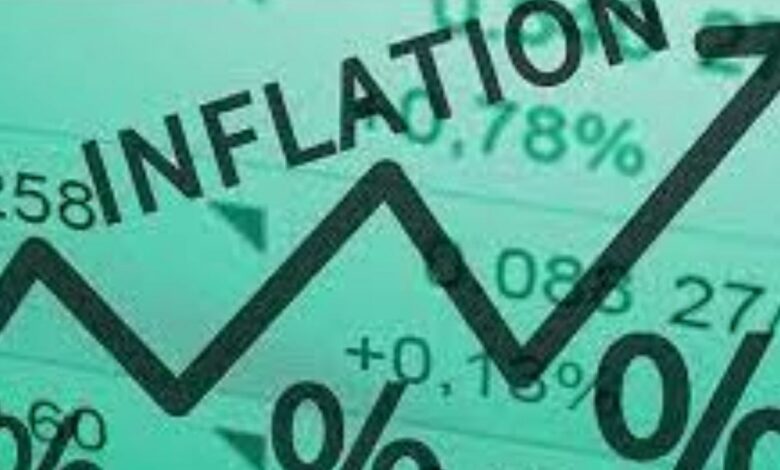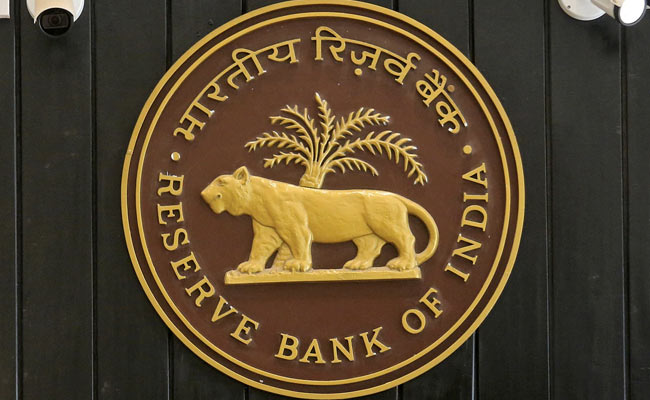How will the powerful rising global inflation impact India, which reached 6.95 per cent in March?
powerful rising global inflation impact India,

How will the powerful rising global inflation impact India, which reached 6.95 per cent in March?
Of course, India is unaffected by global inflationary pressures. However, India’s retail global inflation rate, measured by the Consumer Price Index (CPI), rose to a high of 6.95% in 17 months in March. The world economy is suffering from rising prices and is in danger of recession. The United States, Europe and Japan all report high inflation.
Experts believe that the war between Russia and Ukraine following the shutdown of COVID-19 in China increases the risk of recession. But, of course, India is unaffected by global inflationary pressures. India’s retail inflation rate that is measured by the Consumer Price Index (CPI), rose to a high of 6.95% in 17 months in March. Inflation in food baskets in March was 7.68%, up significantly from 5.85% last month. In addition, according to the Ministry of Statistics and Program Implementation, food prices continue to rise amid supply chain problems.
In an announcement at the MPC meeting, RBI Governor Shakanta Das said, “Continuous supply disruptions will affect corn, palladium, aluminium, nickel, cooking oil and fertilizers, boosting global commodity and financial markets.”Russian President Vladimir Putin foresaw this.
)
“When people face rising gas prices, food prices, and unprecedented inflation, I can assure you that it will affect the domestic political process. They are Russian domestic politics. He was very hoping for everything that would affect the process-they. They always made mistakes and didn’t understand that the Russians were constantly united under challenging situations. “
India’s battle with global inflation
CPI data is a confirmation that the Indian market has recently complained. Lemon, a warm Indian summer staple, reportedly reached Rs 300,350 per kg at the Radipat Nagar market in Delhi. A shortage of lemons was witnessed due to the destruction of crops by the cyclone in Gujarat, but the price of other commodities soared due to shipping costs. Tomatoes ranged from 4,045 rupees, while onions were 40 rupees per kilogram. Cooking oil prices are also rising, and Governor Das said pressure on cooking oil prices is likely expected to constantly grow for the foreseeable future due to export restrictions by primary producers and disruptions in supply from the Black Sea region.

CPI data is 18.79% of oil and oil inflation from February to 18.79 per cent as a geopolitical crisis of the Russian Ukraine war. Ukraine is a significant exporter of sunflower oil. In global inflation, the price increase rate was 9.63 compared to February 20, 2002, “Meat and Fish”. In addition, transportation expenses are rising due to rising fuel prices. Since March 22, there was a revision of 14, and as a result, 10 rupees increased gasoline and diesel rates.
In Delhi and Mumbai, gasoline is 105.41 rupees and 120.51 rupees, and diesel is 96.67 rupees and 104.77 rupees per litre. Fuel prices haven’t risen in the last seven days. Also, on March 31, the government announced that domestic natural gas prices would be $ 6.10 per MMBtu. That’s double the $ 2.9 per MMBtu that was at the time of the announcement. The new price will be applied from April. The latest price is the highest so far since 2014.
The rate of liquefied petroleum gas (LPG) in commercial cylinders has also risen by 250 rupees since April. A standard 19kg bottle costs 2,253 rupees in Delhi and 2,205 rupees in Mumbai. In Delhi, an unsubsidized 14.2 kg LPG bottle price is 949.50 rupees. Prices for CNG and PNG have also risen. And global oil prices rose on Wednesday amid concerns about a decline in production in Russia, which was subject to sanctions. There are many fears of supply shortages after Moscow states that peace talks with Russia are at a standstill.
Brent crude oil futures rose 59 cents (0.6%) to $ 105.23 a barrel by 0053 GMT, while West Texas Intermediate (WTI) crude oil futures rose 60 cents (0.6%) to a barrel. It was 101.20 US dollars per unit. Russia’s oil and gas condensate production fell below 10 million barrels/day on Monday, with sanctions from several countries hindering trade. This is the lowest level since July 2020.
The West also urged India to limit Russia’s energy imports. However, Secretary of State S. Jaishankar told Western officials in various ways that India’s imports from Russia were smaller than those imported by the West. It is also tiny compared to the country’s total energy imports.
Global Inflation Woes
Aside from falling prices in India, the reason analysts consider a recession likely is the record inflation in the United States. The Ministry of Labor announced on Tuesday that the consumer price index rose 8.5% in March. Talking about the hike, then this is the most significant year-on-year increase since December 1981. Prices are backed by tight supply chains, resilient consumer demand, and the global food market turmoil. Energy markets deteriorated by the war between Russia and Ukraine.
While talking about the gasoline, the average price of a gallon of gasoline in the United States is $ 4.10, down in recent weeks but up 43% from a year ago. Soaring energy prices have led to higher transportation costs, making goods and parts more expensive to consumers. The price spiral occurred after the US and global economies recovered at an alarming rate from the coronavirus recession. Recovery was also facilitated by government spending. However, the rapid recovery of activity and rising consumer demand meant that businesses and ports struggled to keep up, leading to delayed deliveries and higher prices.
In the United States as well as the United Kingdom, consumer price and global inflation rose to 7.0% in March, the highest level since March 1992, up from 6.2% in February. “The biggest rise is in the cost of gasoline, and prices are well ahead of recent fuel tax cuts and furniture,” said Grant Fitzner, chief economist at the National Bureau of Statistics. Japan also experienced record-breaking inflation in March.
The March Corporate Commodity Price Index (CGPI) rose 9.5% year on year. CGPI measures the prices that companies charge each other for goods and services. This was followed by a revised 9.7% rise in February, which was the fastest pace ever, surpassing the average market forecast of 9.3%. According to the Bank of Japan (BOJ), the index for March was 112.0, the highest since December 1982.
It is revealed by the Peterson Institute for International Economics that global inflation and the global economy is at increased risk of recession and is ready for recession. As a result, global growth is for sure expected to slow to 3.3%, compared to 5.8% in 2021.
Impact of global inflation on India
Some experts and the State Bank of India have shown that the Reserve Bank of India is currently expected to raise its repo rate by at least 50 basis points. This could be -4 (+/-) 2%, where India’s inflation rate of 6.95% is above the RBI’s 4% comfort band, and there is a 2% margin on either side. “Currently, we expect to raise rates by 25 basis points each in June and August, and this cycle will accumulate 75 basis point rates,” SBI said in an Ecowrap research report.
All eyes also pay attention to the rains of the Indian monsoon, and early reports show average rainfall this year. On Tuesday, India’s private weather forecasting agency Skymet said that monsoon rainfall is expected to account for 98% of the long-term average, and India has a 65% chance of getting average rainfall. This is because almost half of India’s unirrigated cultivated land relies on rain from June to September each year to grow crops such as rice, corn, sugar cane, cotton and soybeans. A good monsoon is then expected to cool the rise in temperature and the fall in global inflation.
The RBI also takes into account in interest rate setting meetings and government intervention. Thus, India will face strong headwinds to counter global inflation and offset growth in the coming months. The recent outbreak of COVID cases provided some breathing space and a healthy number showing a robust economic recovery. But violent global inflation loses some of its brilliance, and sooner or later, it is necessary to take steps to counter the effects of rising fuel prices and global supply shocks and contain commodity prices that grab headlines that affect everyday life.
As the war crisis between Russia and Ukraine continues into the 49th day, and the tragedy of the global inflation and the global depression is imminent, adjusted rate hikes and a good monsoon may be essential factors in the fight against inflation in India.

The end consumer of goods is most affected by rising global inflation. The rates of goods and services are constantly rising. However, consumer salaries and incomes do not increase proportionally, and there is a delay. This reduces the affordability of needful goods and services for these end-users.
Global inflation is defined as the sustained rise in the economy’s general price level over a period of time. It has a far more negative impact on economic decision making and reduces purchasing power. However, the positive effect is that deflation is prevented.
The political economy of global inflation will be seen getting revealed in the approaching days of 2022. This should remain tough in the medium term. India is also suffering from inflation due to its high wholesale price index of 15%. Retail inflation hasn’t risen as high as 5%, but the Reserve Bank of India (RBI) predicts consumer inflation to be 5.7% by March. Many independent economists believe this number can exceed 6%.
Over time, much higher WPI inflation tends to affect consumer prices. Political, inflation has always been a major risk to ruling parties. When energy and commodity-driven global inflation fully penetrates the Indian system, it will begin to affect the outlook for the Bharatiya Janata Party (BJP) elections. Internally as per reported by the sources, the BJP is very concerned about the impact of inflation on the poor.
edited and proofread by nikita sharma




